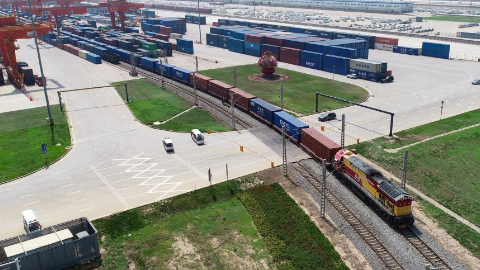
In September 2013, in Kazakstan, Xi Jinping delivered a speech in which he said:
“Throughout the millennia, the peoples of various countries along the ancient Silk Road have written a chapter of friendship that has been passed on to this very day. More than 2000 years of exchanges demonstrate that on the basis of unity, mutual trust, equality, inclusiveness, mutual learning and mutually beneficial cooperation, countries of different races, beliefs and cultural backgrounds are fully capable of sharing peace and development. This is the valuable inspiration we have drawn from the ancient Silk Road.”
He goes on to promote establishing closer ties, seeking consultation, improved and unimpeded trade, infrastructure development, enhanced monetary systems, and increased mutual understanding.
Ten years on, the third Belt and Road Forum was held in Beijing, on October 17-18. In a letter, Chinese Consul-General in Auckland Chen Shijie outlined the achievements globally and opportunities for New Zealand. The letter is reproduced here:
The Belt and Road is Leading up to Openness and Inclusiveness
This month, China will host the third Belt and Road International Cooperation Summit Forum, which coincides with the 10th anniversary of the Belt and Road Initiative(BRI), attracting the attention of the international community. In September and October of 2013, during his visits to Kazakhstan and Indonesia, Chinese President Xi Jinping proposed the initiative to jointly build the Silk Road Economic Belt and the 21st Century Maritime Silk Road respectively, collectively known as the BRI. At that time, the global economy was still grappling with the aftermath of the financial crisis. Global demand was shrinking significantly, and developing countries were facing a shortage of funds despite the huge demand for infrastructure. Against this backdrop, China put forth the BRI, aiming to uphold a free and open trade system, promote efficient connectivity in the resource market, accelerate the construction of infrastructure and logistical channels, and ensure the smooth and stable operation of regional industrial and supply chains.
The BRI is China’s idea, but its opportunities and outcomes are going to benefit the world. It is guided by the principles of extensive consultation, joint contribution and shared benefits. “Extensive consultation” emphasizes collective decision-making that considers the interests and concerns of all parties; “joint contribution” underscores mutual efforts that leverage each stakeholder’s strengths and potentials; and “shared benefits” stresses a win-win approach that meets the interests for all. In short, it calls for countries to work together in decision-making, co- development, and mutual sharing of benefits.
Over the past decade, the community of the BRI has continually expanded, making the pie of our converging interests bigger. China has signed over 200 cooperative documents with 152 countries and 32 international organizations, resulting in more than 3,000 projects. From 2013 to 2022, China’s annual average trade volume with the BRI partners has increased by 8.6%, exceeding 2 trillion USD. The cumulative two-way investment with these countries has surpassed 270 billion USD, and the total amount of the newly signed contracts in construction projects has exceeded 1.2 trillion USD. Furthermore, over 420,000 local jobs have been created in these partner countries. The BRI has turned vision into tangible outcomes, and its achievements are evident for all. It has garnered increasingly positive responses from numerous countries and international organizations, making it a highly regarded international platform for cooperation.
However, there are also critics, out of misperception or prejudice. Some people analyze the BRI from a geopolitical view, and some describe it as an advertisement for Chinese development model or even “debt trap”. These are all groundless accusations, if not misleading narratives with ulterior motives. As President Xi Jinping stated, “the BRI is an open platform for cooperation. It is guided by the principles of consultation and collaboration for shared benefits. It is not designed to serve any hidden geopolitical agenda, it is not targeted against anyone and it does
not exclude anyone. It is not an exclusive club that is closed to non- members, nor is it a “trap” as some people have labeled it. Rather, the BRI is a major and transparent initiative with which China shares opportunities and pursues common development with the rest of the world.”
Today’s world is engulfed in intricate challenges, difficulties and geopolitical tensions. Economic recovery remains a daunting task. The development gap widens, and anti-globalization sentiments are on the rise. Humanity has once again come to a crossroads. Inciting factional confrontations or advocating for “decoupling” offers no way forward, while sharing opportunities and jointly seeking development are the righteous paths. BRI cooperation aligns with the trend of the times, adheres to international rules and norms, conforms with the concept of a global community with shared future, and truly reflects multilateralism.
New Zealand is the first developed country to sign an agreement on the BRI with China. Both China and New Zealand are committed to building an open global economy, upholding free and inclusive international trade environment, and opposing all forms of protectionism. Both countries acknowledge the essence of collaborative international efforts in tackling global challenges like climate change, and are supportive of the Pacific Island nations’ quest for sustainable development. Therefore, BRI resonates with the developmental approach of both China and New Zealand. China and New Zealand, with their respective strengths in infrastructure, green energy, agriculture, husbandry, and scientific innovations, enjoy broad cooperation prospects with great potential. During the visit led by Prime Minister Chris Hipkins in June this year, several bilateral agreements spanning various sectors, such as food, health, and hospitality have been signed. In Tianjin, the delegation visited a supermarket where products imported from New Zealand, such as kiwifruit, beef, lamb, deer meat, dairy products, and wines, were displayed.
During his visit to China in July this year, former Prime Minister Sir John Key reflected on the decade-long journey of the BRI, emphasizing its significance. He hailed the past decade as “a very important milestone”, and noted “New Zealand has always been at the forefront of recognizing China.” Not long ago, Auckland Business Chamber organized a business tour to China to check out new trade opportunities. Members of the delegation found the trip an eye-opening experience, which enhanced their confidence in cooperating with Chinese enterprises. Simon Bridges,
CEO of Auckland Business Chamber, who is optimistic about the prospect of trade between New Zealand and China, believed that “China is still a very big market and there are still opportunities for us.”
Upon the 10th anniversary of the BRI, China looks forward to joining hands with New Zealand under the principles of openness and inclusiveness. It is our shared aspiration to enhance mutual exchanges, ensure high-quality development and bring greater benefits to the people of both countries. This will surely contribute to peace, development, and prosperity in the Asia-Pacific region and across the world.
Dave Bromwich




